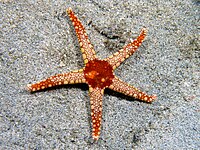
Diversity and evolution of bacterial symbionts in the gut symbiotic organ of jewel stinkbugs (Hemiptera: Scutelleridae)
Sign Up to like & getrecommendations! Published in 2019 at "Applied Entomology and Zoology"
DOI: 10.1007/s13355-019-00630-4
Abstract: The majority of plant-sucking stinkbugs of the superfamily Pentatomoidea possess numerous crypts in the midgut as the symbiotic organ, where specific and beneficial symbiotic bacteria are harbored extracellularly. The host–symbiont relationships are co-speciating in the… read more here.
Keywords: gut symbionts; evolution bacterial; diversity evolution; gut symbiotic ... See more keywords

Intercontinental Diversity of Caballeronia Gut Symbionts in the Conifer Pest Bug Leptoglossus occidentalis
Sign Up to like & getrecommendations! Published in 2022 at "Microbes and Environments"
DOI: 10.1264/jsme2.me22042
Abstract: Many stinkbugs in the superfamily Coreoidea (Hemiptera: Heteroptera) develop crypts in the posterior midgut, harboring Caballeronia (Burkholderia) symbionts. These symbionts form a monophyletic group in Burkholderia sensu lato, called the “stinkbug-associated beneficial and environmental (SBE)”… read more here.
Keywords: caballeronia; gut symbionts; leptoglossus; caballeronia gut ... See more keywords

Assessing Biosynthetic Gene Cluster Diversity of Specialized Metabolites in the Conserved Gut Symbionts of Herbivorous Turtle Ants
Sign Up to like & getrecommendations! Published in 2021 at "Frontiers in Microbiology"
DOI: 10.3389/fmicb.2021.678100
Abstract: Cephalotes are herbivorous ants (>115 species) feeding on low-nitrogen food sources, and they rely on gut symbionts to supplement their diet by recycling nitrogen food waste into amino acids. These conserved gut symbionts, which encompass… read more here.
Keywords: specialized metabolites; gut symbionts; conserved gut; turtle ants ... See more keywords